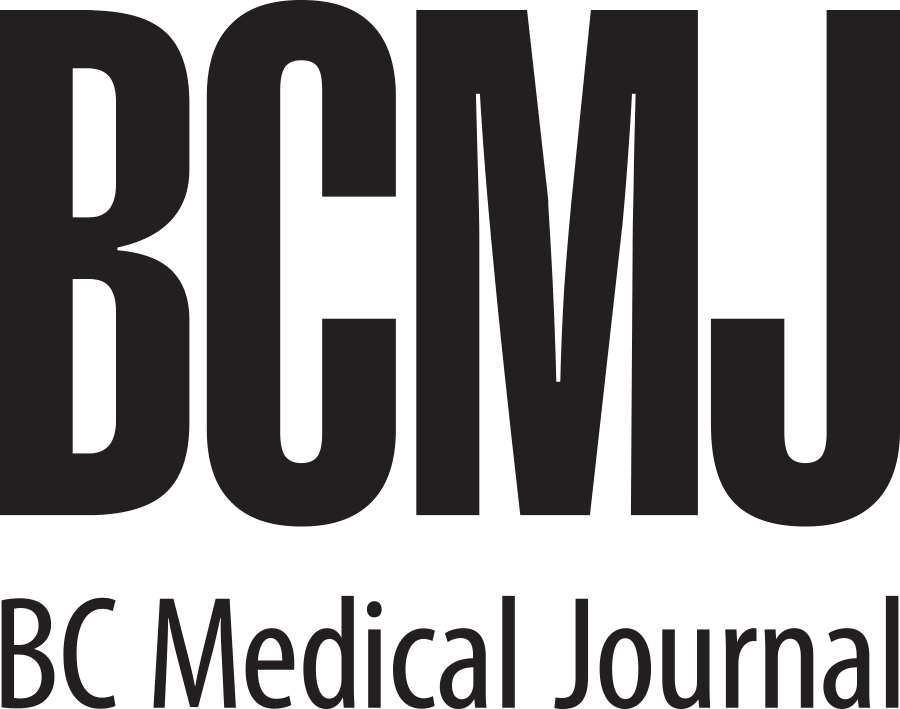Work-related hearing loss
In the last few decades, occupational noise has become more widely recognized as a hazard that has resulted in many cases of otherwise preventable hearing loss. According to Statistics Canada, approximately 4.6 million Canadians aged 20 to 79 have hearing loss—approximately 20%. Within that group, 40% to 60% are older than 65. Although the most common cause of hearing loss is presbycusis (age-related changes to hearing), considering occupational hearing loss can prevent further loss and help workers access hearing care.
Occupational risk factors include long-term exposure to high-intensity noise, acoustic trauma, and head injury. WorkSafeBC receives an average of 3800 occupational hearing loss claims per year, of which approximately 60% are accepted. Many claimants work in noisy or dangerous industries such as sawmills/pulp mills, forestry, construction, manufacturing, or mining. During the past two decades, the proportion of workers in noisy industries with occupational noise-induced hearing loss has been declining due to effective hearing loss prevention programs.
Claims for occupational noise-induced hearing loss (ONIHL) are accepted where the worker has a significant history of hazardous occupational noise exposure and a hearing loss configuration and time course consistent with the nature of ONIHL. Research shows that an average exposure of 85 dBA over the course of a typical workday would result in an 8% incidence of ONIHL after 40 years.[1,2] WorkSafeBC uses this conservative minimum noise exposure level (85 dBA) to identify the workers at risk.
ONIHL is bilateral and symmetrical, even with perceived asymmetrical exposure, starts in higher frequencies (3 to 6 kHz), and is worse at those frequencies than at 250 Hz to 2 kHz.[3,4] Noise causes hearing loss most rapidly during the first 15 years of exposure before plateauing. Later, once noise ceases, hearing deterioration related to past noise exposure also ceases, although hearing can deteriorate for other reasons.[5,6]
WorkSafeBC has a noise exposure database with more than 50 000 data entries dating back to the 1970s, with ongoing updates. Subjective judgments of whether sound intensity is hazardous to hearing are notoriously inaccurate. Only professional noise measurement equipment and appropriate analysis can determine potential noise hazard.
Determining a cause-and-effect relationship between work and hearing loss can be complex, since noise exposure does not necessarily result in related hearing loss. Also, research shows that sensorineural high-frequency hearing loss is caused by many things other than occupational noise, and is the most common pattern of hearing loss in the general population.[1,7] The multitude of potential causes of hearing loss necessitates accurate and comprehensive diagnostic audiological evaluation to fairly determine ONIHL claims as well as appropriate treatment for each specific cause.
WorkSafeBC audiologist advisors provide medicolegal, evidence-based opinions on potential occupational causation of hearing loss. The audiologist advisor’s role includes reviewing claimant medical and work history, audiometric testing, examining audiometric results for consistency with ONIHL or trauma, and providing treatment recommendations. The WorkSafeBC test battery is designed to determine behavioral consistency and uses specialized test equipment and techniques not common in private clinics, especially objective physiological measures (otoacoustic emissions testing and slow cortical potentials threshold estimation). The focus of testing is to obtain precise thresholds; determine the type, degree, and configuration of hearing loss; and determine if there is any nonorganic component to the hearing loss.
For further information
If your patient suffers from hearing loss that is likely work related, please contact a medical advisor in your local WorkSafeBC office.
—Nirvana Kiarostami, AuD, RAUD, Aud(C)
—Graham Raynor, MSc, Aud(C), RAUD
WorkSafeBC Audiologist Advisors
hidden
This article is the opinion of WorkSafeBC and has not been peer reviewed by the BCMJ Editorial Board.
References
1. International Organization for Standardization. ISO 1999: 2013. Acoustics—Estimation of noise-induced hearing loss. Geneva, Switzerland; 2013.
2. National Institute of Occupational Safety and Health (NIOSH). Criteria for a recommended standard—occupational noise exposure. Cincinnati, OH; 1998.
3. Kirchner DB, Evenson E, Dobie RA, et al. Occupational noise-induced hearing loss: ACOEM Task Force on Occupational Hearing Loss. J Occup Environ Med 2012;54;1:106-108.
4. Sataloff R, Sataloff J. Occupational hearing loss: Basic concepts. J Occup Hearing Loss 1998;1:7-15.
5. Alberti P. Noise and the ear. In: Stephens D (ed). Scott-Brown’s Otolaryngology. London: Butterworth; 1997.
6. Albera R, Lacilla M, Piumetto E, Canale A. Noise-induced hearing loss evolution: Influence of age and exposure to noise. Eur Arch Otorhinolaryngology 2010;267:665-671.
7. Lee FS, Matthews LJ, Dubno JR, Mills JH. Longitudinal study of pure-tone thresholds in older persons. Ear Hear 2005;26:1-11.
